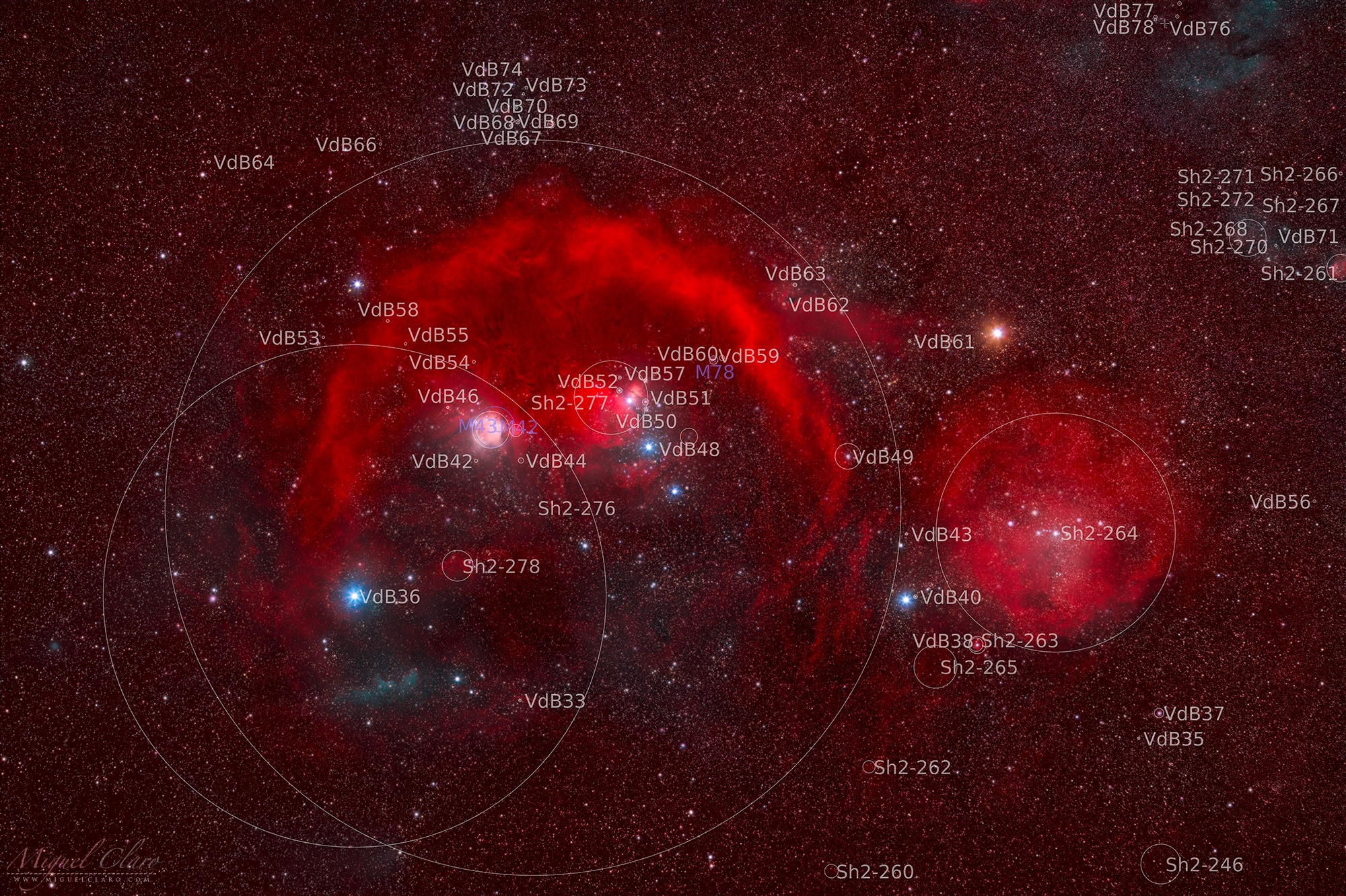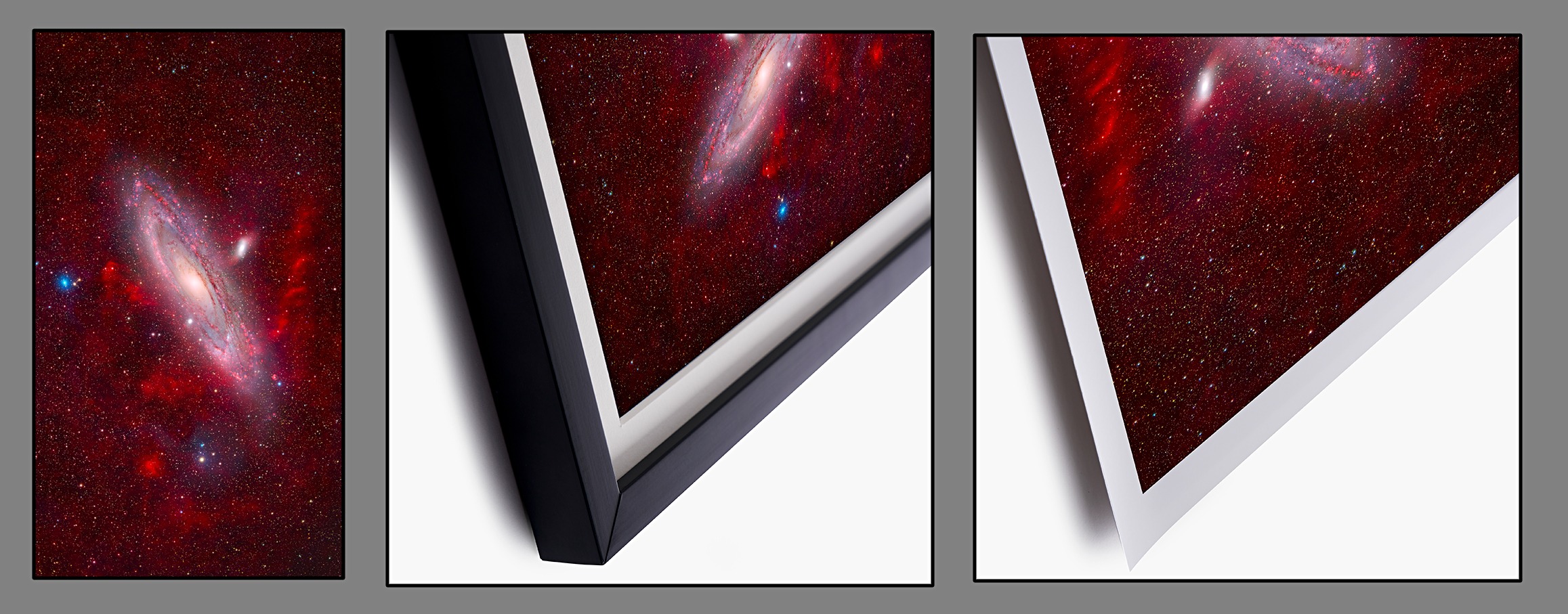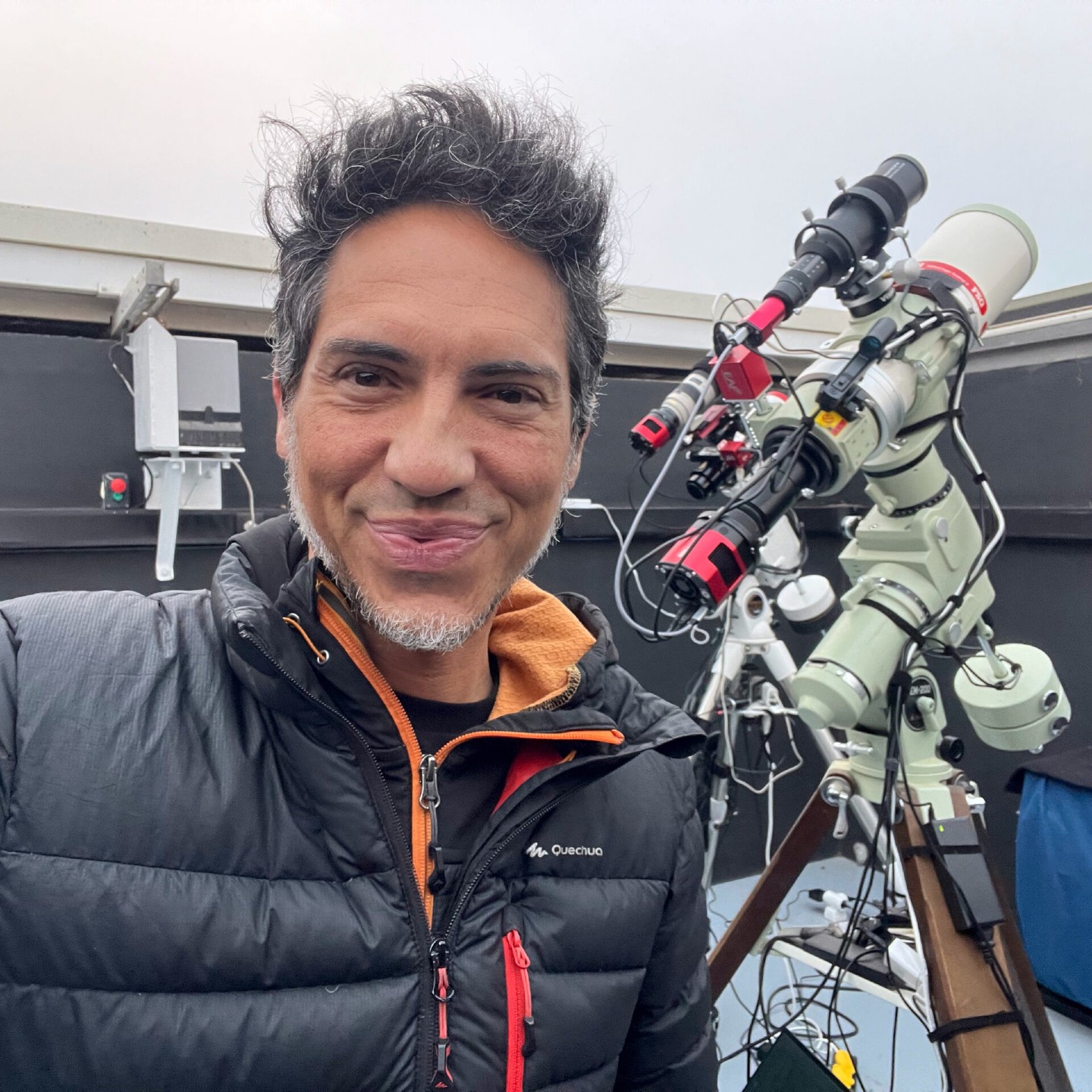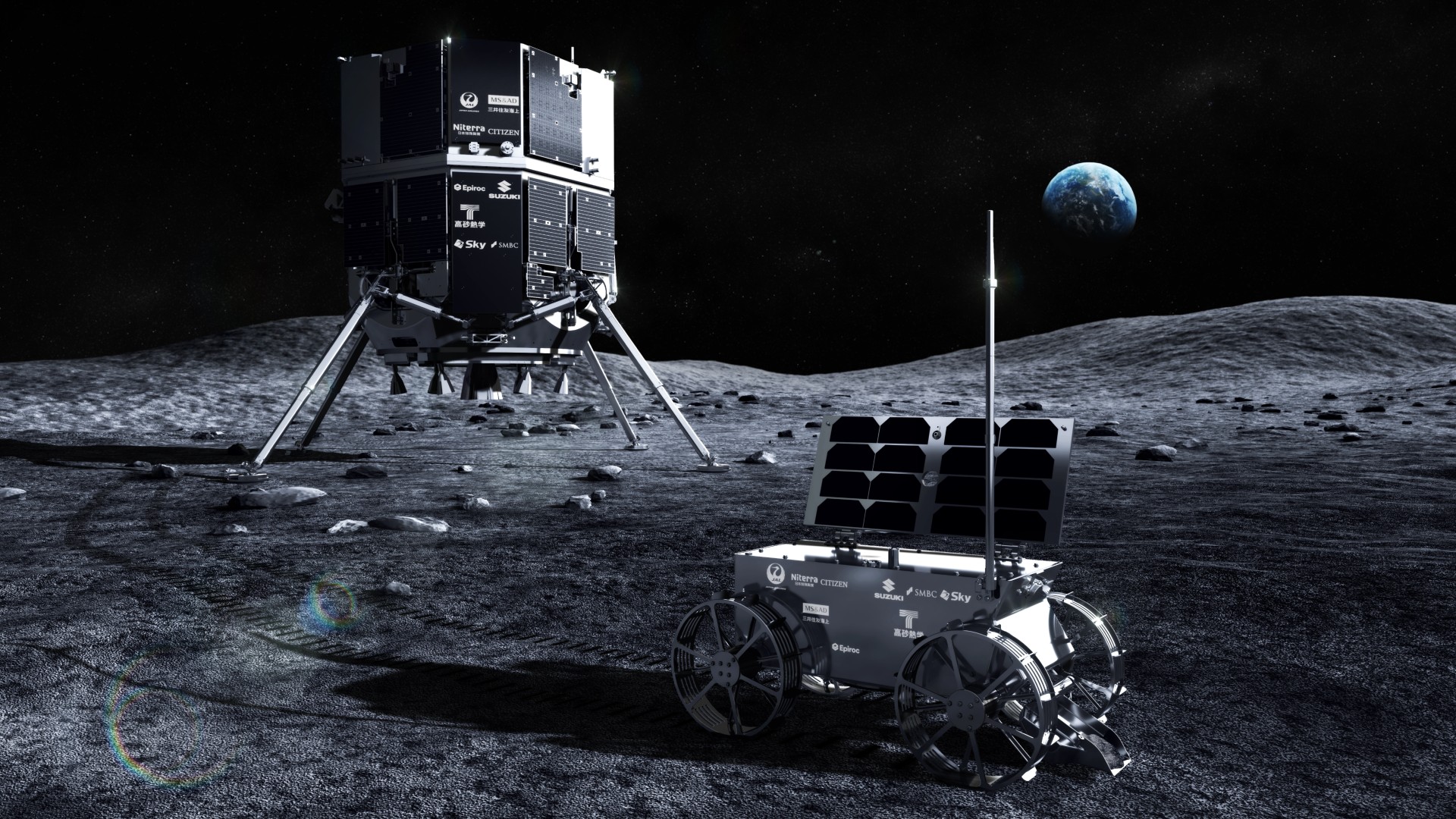Orion constellation glows red in gorgeous deep space photo
The Orion Constellation glows red due to hydrogen gas.

Miguel Claro is a professional photographer, author and science communicator based in Lisbon, Portugal, who creates spectacular images of the night sky. As a European Southern Observatory Photo Ambassador and member of The World At Night and the official astrophotographer of the Dark Sky Alqueva Reserve, he specializes in astronomical "Skyscapes" that connect both Earth and the night sky.
This deep view of the Orion Constellation glows in reddish hues thanks to a filtered view of hydrogen alpha emission, a type of light emitted by hydrogen atoms.
The large, intricate semi-circle around the three stars that make up Orion's belt is known as Barnard's Loop (Sh2-276), a nebula about 1,600 light-years away that itself spans some 300 light-years across. Barnard's Loop is part of the even bigger Orion molecular cloud complex, made up of dust, hydrogen and helium, and is the birthplace of stars.

I always wanted to make an image like this one that shows all the beautiful reddish hydrogen that surrounds one of the most spectacular and colorful regions of the entire night sky as seen from Earth. This cloud contains known wonders like M42, Horse Head, LDN 1622, the large Lambda Orionis Ring and the bluish (OIII) Witch Head Nebula, close to Rigel star.
I had my set up for this shot (Samyang 35mm f1.8 with Poseidon C Pro) available and prepared for two months before Orion cooperated. This image was a bit challenging to capture, due to uncooperative weather and the fact that the Orion constellation was beginning to set early along the western horizon.

I only had 40 minutes available for each clear night between February and March 2025 as seen from the Dark Sky Alqueva Reserve in Portugal, so collecting the seven hours of data in total for this image took many nights. Had I taken it in the beginning of winter, I could have taken it in one night. I hope you enjoy the result.
Fine art prints

I hope you enjoy it as much as I do, and if you want to support my work as an independent artist, you can buy one of my images as a print and a piece of art or a wall decor for your sweet home! Explore the size options and different types available on my Print gallery. Meanwhile, you can sign-up my newsletter to get early access of future releases.
Breaking space news, the latest updates on rocket launches, skywatching events and more!
Join our Space Forums to keep talking space on the latest missions, night sky and more! And if you have a news tip, correction or comment, let us know at: community@space.com.
Miguel Claro is a professional photographer, author and science communicator based in Lisbon, Portugal, who creates spectacular images of the night sky. As a European Southern Observatory photo ambassador, a member of The World At Night and the official astrophotographer of the Dark Sky Alqueva Reserve, he specializes in astronomical skyscapes that connect Earth and the night sky.
You must confirm your public display name before commenting
Please logout and then login again, you will then be prompted to enter your display name.

